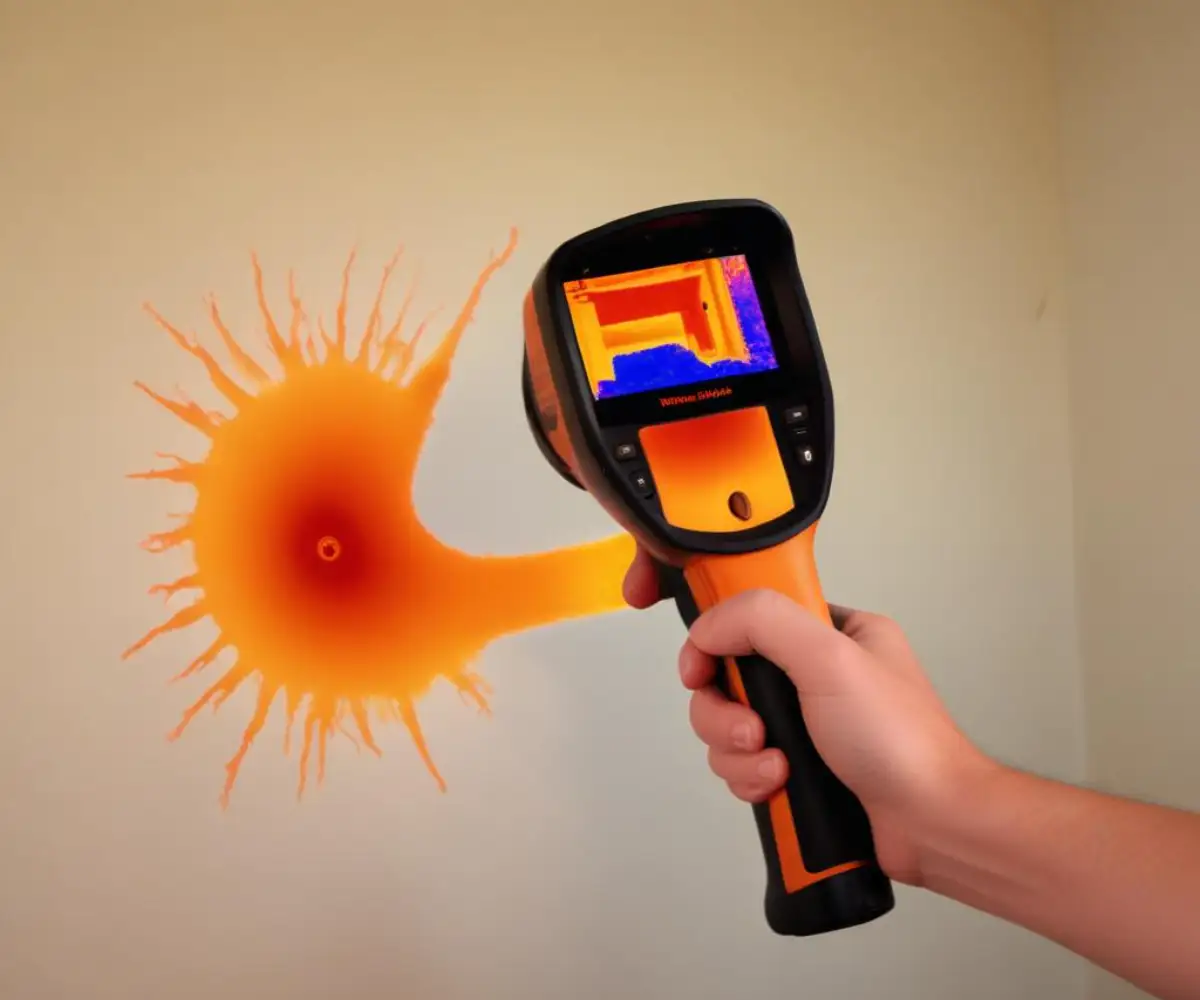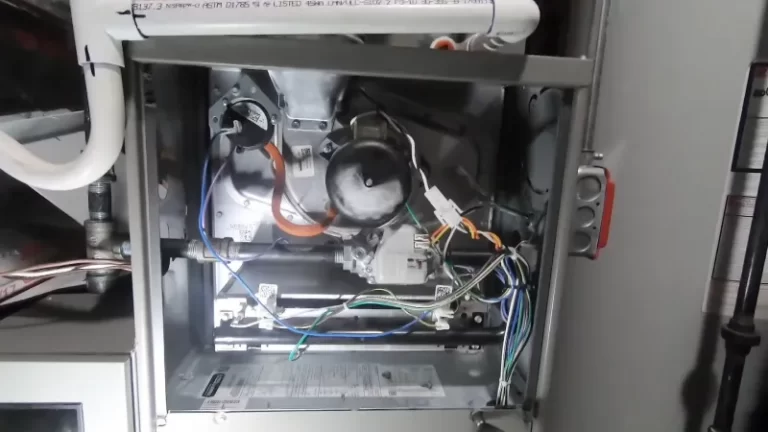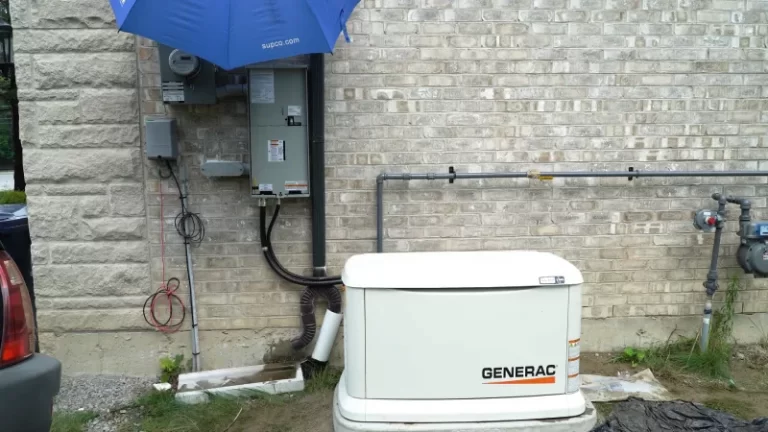Wall Hot to the Touch? Don’t Ignore This URGENT Fire Hazard
You place your hand on a wall in your home, and something is wrong. It’s noticeably warm, or even hot. This isn’t just a strange occurrence; it’s a critical warning sign that demands immediate attention. A hot wall is never normal and often points to a hidden danger lurking within your home’s structure.
Ignoring a hot spot on a wall can have devastating consequences, ranging from severe structural damage to a life-threatening fire. Understanding the potential causes is the first step toward protecting your home and family. The heat is a symptom of an underlying problem that could be electrical, related to your plumbing, or an issue with your HVAC system.
You'll Learn About
Why Is My Wall Hot? Uncovering the Hidden Causes
Discovering the source of the heat is crucial. The nature of the warmth—whether it’s a concentrated hot spot or a large, warm area—can provide clues. Issues can range from simple fixes to complex problems requiring a licensed professional.
Deadly Serious: Electrical Problems
The most dangerous reason for a hot wall is an electrical issue. These problems create a significant risk of fire and should be addressed immediately by a qualified electrician. Heat is generated when electricity encounters resistance it cannot overcome.
Common electrical culprits include faulty wiring, overloaded circuits, or failing outlets and switches. Loose connections inside an electrical box can generate intense heat as electricity arcs between wires. Similarly, if a circuit is handling more power than it’s rated for, the wires inside the wall can heat up like a toaster element, a condition that can easily ignite wood studs and insulation.
Sometimes, the issue is visible at the outlet. If you’ve noticed bent outlet covers, it could be a sign of excessive heat causing the plastic to warp. An unusual smell, like rotten eggs or burning plastic, can also signal a dangerous electrical fault; if you notice such an odor, it may be time to investigate urgent causes for strange smells.
Hidden Leaks: Plumbing and Water Issues
Your home’s plumbing system can also be the source of a warm wall. A leak in a hot water pipe will continuously release warm water into the wall cavity. This not only heats the surrounding drywall but also creates a damp environment perfect for mold and mildew growth, which can cause significant health problems and structural rot over time.
The heat from a plumbing leak is typically more diffused than an electrical hot spot, often creating a large, warm, and sometimes damp patch on the wall. You might also notice a musty smell or see discoloration on the paint or drywall. In severe cases, the wall material may feel soft or spongy to the touch.

Airflow Gone Wrong: HVAC System Faults
The ductwork for your heating, ventilation, and air conditioning (HVAC) system is often routed through walls and ceilings. If a duct carrying hot air develops a leak or becomes disconnected, it will blow hot air directly into the wall cavity. This will cause a large section of the wall to feel warm when the heating is on.
Another common issue is a blocked or closed vent. When airflow is restricted, pressure and heat can build up within the ductwork. This forces the furnace to work harder and can cause the ducts themselves to become excessively hot, transferring that heat to the adjacent wall surfaces. Proper airflow is critical for both efficiency and safety.
External and Environmental Heat Sources
Not all causes are hidden within the walls. Sometimes, the source of heat is external. A wall that receives direct, intense sunlight for several hours a day can absorb and radiate a significant amount of heat, especially if it is painted a dark color. This is more common on west-facing walls that get the brunt of the afternoon sun.
Other sources can include appliances. A wall behind a large television, computer, or oven can become warm from the heat these devices generate. Similarly, recessed lighting fixtures, especially older models not rated for direct contact with insulation (non-IC rated), can generate enough heat to warm the ceiling or wall around them.
Immediate Steps for a Hot Wall
When you discover a hot wall, your immediate actions are critical for safety. Do not delay, as the situation could escalate quickly, especially if the cause is electrical.
First, if you suspect an electrical issue—if the hot spot is near an outlet, switch, or smells of burning—go to your electrical panel and shut off the breaker that supplies power to that area. This immediately removes the primary danger. Avoid touching the hot area directly, as it could be hot enough to cause a burn.
| Potential Cause | Risk Level | Key Symptoms | Recommended Professional |
|---|---|---|---|
| Electrical Fault | Extreme | Concentrated hot spot, burning smell, discolored outlet, flickering lights. | Licensed Electrician |
| Hot Water Pipe Leak | High | Large warm/damp area, musty smell, soft drywall, increased water bill. | Plumber |
| HVAC Duct Leak | Medium | Large warm area (only when heat is on), reduced airflow from vents. | HVAC Technician |
| Sunlight/Appliance Heat | Low | Wall is warm only during certain times/when appliance is on, no other symptoms. | Homeowner (Monitor) |
Solving the Problem: When to DIY and When to Call a Pro
Once you’ve taken initial safety precautions, the next step is to diagnose the problem more thoroughly. While some causes are benign, others require immediate professional intervention.
Troubleshooting the Source of the Heat
A systematic approach can help narrow down the possibilities. Start by unplugging all devices from any outlets on or near the hot wall. If the heat dissipates after an hour or two, the issue was likely one of the connected devices or its charger. Some large power adapters, often called “wall warts,” naturally get warm during operation.
If the wall remains hot, check your HVAC system. Are any vents on or near the wall blocked by furniture or rugs? Turn your system’s fan on (without heat or AC) and feel for airflow from the vents. Weak or no airflow could point to a blockage or a disconnected duct that needs attention from an HVAC professional.
For potential plumbing issues, look for any visible signs of water damage on the wall, the baseboards, or the floor below. You can also check your water meter. Turn off all faucets and appliances that use water, then watch the meter. If it continues to move, you likely have a leak somewhere in your home.
Why You Must Call a Professional
When it comes to a hot wall, erring on the side of caution is always the best policy. If you cannot identify a simple, external cause for the heat, you must call a professional. Electrical work is not a DIY job for the untrained; a mistake can be fatal or cause a fire. A licensed electrician has the tools and expertise to safely inspect wiring inside walls, test circuits, and make necessary repairs.
Similarly, locating and repairing a leaking pipe inside a wall requires a plumber. They can use specialized equipment like moisture meters and thermal cameras to pinpoint the leak without excessive damage to your home. Trying to fix it yourself could lead to a much larger and more expensive water damage problem.
After the Fix: Repairing Wall Damage
Once the underlying cause of the hot wall has been resolved by a professional, you may be left with some cosmetic or structural damage. Electricians, plumbers, or HVAC technicians often need to cut into drywall to access wires, pipes, or ducts. This leaves you with holes that need to be patched.
Repairing drywall is a manageable project for many homeowners. The process involves fitting a new piece of drywall into the opening, securing it, and then applying joint compound (mud) and tape to create a seamless surface. When choosing a compound for patching, understanding your options is key. For a durable and sandable finish, you might want to compare products like those discussed in this guide on drywall compounds.
Ensuring the patch is smooth and level with the existing wall is critical for a professional-looking repair. After sanding, the area can be primed and painted to match the rest of the wall, completely erasing any sign of the previous problem. Taking the time to do this final step properly restores the look and integrity of your home.


